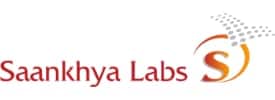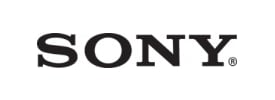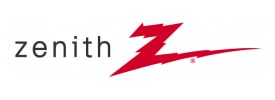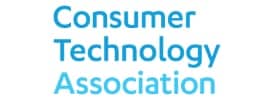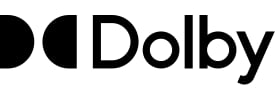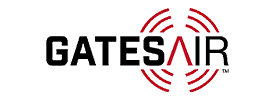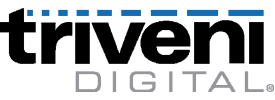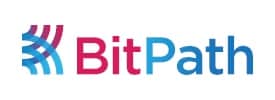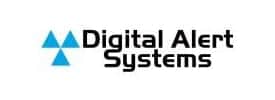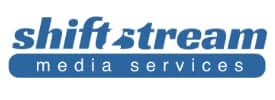Glossary of Acronyms
The table below lists all acronyms defined in ATSC 1.0 Standards. The “Source” column refers to the document in which the acronym is defined.
| Entry | Source | Definition |
|---|---|---|
| [X] | 153 | the greatest integer less than or equal to X |
| 16QAM | 80 | 16 (level) quadrature amplitude modulation |
| 16-VSB | 53, 54 | vestigial sideband modulation with 16 discrete amplitude levels. |
| 1CBPS | 80 | 1 coded bit per symbol |
| 2CBPS | 80 | 2 coded bits per symbol |
| 8PSK | 80 | 8 (level) phase shift keying |
| 8-VSB | 53, 54 | vestigial sideband modulation with 8 discrete amplitude levels. |
| A/D | 53, 54 | analog to digital converter |
| AAC | 153 | Advanced Audio Coding |
| ABA TDES | 70 | 112 bit triple DES used in “encrypt-decrypt-encrypt” mode |
| ABC TDES | 70 | 168 bit triple DES used in “encrypt-decrypt-encrypt” mode |
| AC-3 | 79, 83 | ATSC Digital Audio Compression Standard (see A/52) |
| ACAP | 101, 102 | Advanced Common Application Platform |
| ACAP-J | 101 | ACAP Procedural (Java) |
| ACAP-X | 101 | ACAP Declarative (XHTML) |
| ACATS | 53, 54 | Advisory Committee on Advanced Television Service |
| ACIR | 82 | adjacent channel interference ratio |
| ACLR | 82 | adjacent channel leakage ratio |
| acmod | 52 | audio coding mode |
| ACRR | 82 | adjacent channel rejection ratio |
| addbsi | 52 | additional bit stream information |
| addbsie | 52 | additional bit stream information exists |
| addbsil | 52 | additional bit stream information length |
| AEIT | 81 | aggregate event information table |
| AES | 53, 54 | Audio Engineering Society |
| AES | 153 | Advanced Encryption Standard (AES may also refer to the Audio Engineering Society) |
| AETT | 81 | aggregate extended text table |
| AFI | 95 | authority and format identifier |
| AFD | 54, 79 | active format description. |
| ALC | 153 | Asynchronous Layered Coding |
| AMOL | 79 | automated measurement of lineups |
| ANSI | 53, 54, 79 | American National Standards Institute |
| API | 100 | application programming interface |
| ARM | 96, 100 | application reference model |
| ASCII | 80 | American Standard Code for Information Interchange |
| ASI | 79 | asynchronous serial interface |
| ASTD | 81 | ancillary service target decoder |
| AT | 153 | ATSC time |
| ATC | 82 | ancillary terrestrial component (MSS terrestrial base stations) |
| ATM | 53, 54 | asynchronous transfer mode |
| ATPC | 82 | automatic transmitter power control |
| ATSC | 70, 65, 69, 71, 79, 80, 81, 82, 85, 90, 91, 92, 95, 96, 98, 99, 110, 153 | Advanced Television Systems Committee |
| ATSC-M/H | 153 | ATSC Mobile/Handheld Standard |
| ATTC | 54 | Advanced Television Test Center |
| ATV | 53, 54 | advanced television |
| ATVEF | 91 | Advanced Television Enhancement Forum |
| audblk | 52 | audio block |
| audprodi2e | 52 | audio production information exists, ch2 |
| audprodie | 52 | audio production information exists |
| auxbits | 52 | auxiliary data bits |
| auxdata | 52 | auxiliary data field |
| auxdatae | 52 | auxiliary data exists |
| auxdatal | 52 | auxiliary data length |
| AVC | 153 | Advanced Video Coding (ITU-T H.264 | ISO/IEC 14496-10) |
| AWGN | 54, 80 | additive white Gaussian noise |
| B | 153 | SCCC output block length in symbols |
| baie | 52 | bit allocation information exists |
| bap | 52 | bit allocation pointer |
| BAS | 82 | Broadcast Auxiliary Services (Part 74 of the FCC Rules) |
| BCRO | 153 | broadcast rights object |
| BER | 80, 82 | bit error ratio |
| BFO | 82 | brute force overload |
| BFSK | 82 | binary phase-shift keying |
| bin | 52 | frequency coefficient bin in index [bin] |
| BIOP | 95 | broadcast inter-ORB protocol |
| blk | 52 | block in array index [blk] |
| blksw | 52 | block switch flag |
| BMP | 65, 69 | basic multilingual plane |
| bnd | 52 | band in array index [bnd] |
| bps | 53, 54, 90 | bits per second |
| bpsk | 81 | binary phase shift keying |
| BSD/A | 153 | Broadcast Service Distribution/Adaptation Center |
| bsi | 52 | bit stream information |
| bsid | 52 | bit stream identification |
| bslbf | 57, 65, 69, 70, 81, 90, 92, 93, 94, 95, 97, 98, 100, 110, 153 | bit serial, leftmost bit first (From A/57A: “Bit string, left bit first, where “left” is the order in which the bit strings are written in the Standard. Bits strings are written as strings of 1s and 0s within single quotation marks, e.g. ‘1000 1001’. Blanks within a bit string are for ease of reading and have no significance.” |
| BSM | 153 | BCAST subscription management |
| bsmod | 52 | bit stream mode |
| BSS | 82, 110 | buried spread spectrum (direct sequence) |
| BTSC | 79 | Broadcast Television Systems Committee |
| BWS | 80 | slot bandwidth (for a given service, within a transponder) |
| BWT | 80 | transponder bandwidth |
| C/I | 110 | signal-to-interference ratio (between transmitters within a network) |
| C/N | 82 | carrier to noise |
| CA | 70, 81 | conditional access |
| CAM | 70 | conditional access module |
| CAT | 65, 69, 70, 81, 94, 98 | conditional access table |
| CBC | 70, 96 | cipher block chaining |
| CDTV | 54 | conventional definition television |
| CEA | 69, 79 | Consumer Electronics Association |
| CDP | 79 | caption distribution packet |
| ch | 52 | channel in array index [ch] |
| chbwcod | 52 | channel bandwidth code |
| chexpstr | 52 | channel exponent strategy |
| chincpl | 52 | channel in coupling |
| chmant | 52 | channel mantissas |
| CIT-MH | 153 | ell information table for ATSC-M/H |
| clev | 52 | center mixing level coefficient |
| CM | 79 | component missing (see A/78) |
| cmixlev | 52 | center mix level |
| CMRS | 82 | commercial mobile radio services (cellular, SMR and PCS) |
| COFDM | 82 | coded orthogonal frequency division multiplexing |
| compr | 52, 79 | compression gain word |
| compr2 | 52 | compression gain word, ch2 |
| compr2e | 52 | compression gain word exists, ch2 |
| compre | 52 | compression gain word exists |
| copyrightb | 52 | copyright bit |
| cplabsexp | 52 | coupling absolute exponent |
| cplbegf | 52 | coupling begin frequency code |
| cplbndstrc | 52 | coupling band structure |
| cplco | 52 | coupling coordinate |
| cplcoe | 52 | coupling coordinates exist |
| cplcoexp | 52 | coupling coordinate exponent |
| cplcomant | 52 | coupling coordinate mantissa |
| cpldeltba | 52 | coupling dba |
| cpldeltbae | 52 | coupling dba exists |
| cpldeltlen | 52 | coupling dba length |
| cpldeltnseg | 52 | coupling dba number of segments |
| cpldeltoffst | 52 | coupling dba offset |
| cplendf | 52 | coupling end frequency code |
| cplexps | 52 | coupling exponents |
| cplexpstr | 52 | coupling exponent strategy |
| cplfgaincod | 52 | coupling fast gain code |
| cplfleak | 52 | coupling fast leak initialization |
| cplfsnroffst | 52 | coupling fine SNR offset |
| cplinu | 52 | coupling in use |
| cplleake | 52 | coupling leak initialization exists |
| cplmant | 52 | coupling mantissas |
| cplsleak | 52 | coupling slow leak initialization |
| cplstre | 52 | coupling strategy exists |
| CRC | 53, 54,65, 69, 81, 82, 90, 91, 92, 93, 95, 98, 153 | cyclic redundancy check |
| crc1 | 52 | crc – cyclic redundancy check word 1 |
| crc2 | 52 | crc – cyclic redundancy check word 2 |
| crcrsv | 52 | crc reserved bit |
| CRL | 96 | certificate revocation list |
| CS | 110 | cadence signal |
| csnroffst | 52 | coarse SNR offset |
| CSS | 100 | Cascading Style Sheet |
| CTA | 153 | clear-to-air |
| CVCT | 65, 69, 71, 81, 90, 94 | cable virtual channel table |
| CW | 70 | control word (The key used for MPEG transport scrambling). |
| D/U | 54, 110 | desired (signal) to undesired (signal) ratio |
| d15 | 52 | d15 exponent coding mode |
| d25 | 52 | d25 exponent coding mode |
| d45 | 52 | d45 exponent coding mode |
| DA | 100 | declarative application |
| DAE | 100 | Declarative Application Environment |
| DASE | 96, 100 | DTV Applications Software Environment |
| DAU | 90, 91, 93, 95 | data access unit |
| DAVIC | 91, 100 | Digital Audio Visual Council |
| dB | 85 | decibel |
| dB FS | 85 | decibels, relative to full scale sine wave (per AES17) |
| dB TP | 85 | decibels, true-peak relative to full-scale (per ITU-R BS.1770 Annex 2) |
| dba | 52 | delta bit allocation |
| dbpbcod | 52 | dB per bit code |
| DBFS | 79 | deciBels full scale |
| DBS | 79 | direct broadcast satellite |
| DC | 91 | DownloadCancel |
| DCC | 57, 65, 69, 94 | directed channel change |
| DCCRR | 65 | DCC capable DTV reference receiver |
| DCCSCT | 65, 69 | DCC selection code table |
| DCT | 53, 54 | discrete cosine transform |
| DDB | 91, 95 | DownloadDataBlock |
| DDE | 92 | declarative data essence |
| DEB | 92, 93 | data program element buffer |
| DEBn | 90, 91 | data elementary stream buffer for synchronized data elementary stream n |
| DEBSn | 90 | data elementary stream buffer size for synchronized data elementary stream n |
| deltba | 52 | channel dba |
| deltbae | 52 | channel dba exists |
| deltbaie | 52 | dba information exists |
| deltlen | 52 | channel dba length |
| deltnseg | 52 | channel dba number of segments |
| deltoffst | 52 | channel dba offset |
| DENG | 82 | digital electronic news gathering |
| DES | 70 | Data Encryption Standard |
| DES | 70, 90, 93, 96 | data elementary stream |
| DET | 69, 81, 90, 91, 92, 93, 94 | data event table |
| DFS | 110 | data field synchronization data segment |
| DH | 96 | Diffie-Hellman |
| DHCP | 96 | dynamic host configuration protocol |
| dialnorm | 52 | dialogue normalization word |
| dialnorm2 | 52 | dialogue normalization word, ch2 |
| DII | 91, 94, 95 | DownloadInfoIndication |
| DIMS | 153 | dynamic interactive multimedia scenes |
| DIT | 69 | data information table |
| dithflag | 52 | dither flag |
| DLNA | 71 | Digital Living Network Alliance |
| DNS | 96, 153 | domain name services |
| DOCSIS | 96 | Data Over Cable Service Interface Specification |
| DOM | 100 | document object model |
| DRC | 79, 85 | dynamic range control |
| DRL | 82 | data return link |
| DRM | 153 | digital rights management |
| DS | 110 | delay spread |
| DSI | 91, 94, 95 | DownloadServerInitiate |
| DSL | 96 | digital subscriber line |
| DSM | 54 | digital storage media |
| DSM-CC | 54, 81, 90, 91, 92, 93, 94, 95, 96 | digital storage media command and control |
| DSNG | 80 | digital satellite news gathering |
| DSS | 54 | data segment synchronization |
| DST | 90, 81, 91, 93, 94, 95 | data service table |
| dsurmod | 52 | Dolby surround mode |
| DTD | 100 | document type definition |
| DTH | 80 | direct to home |
| DTS | 53, 54, 81, 90, 92 | decoding time stamp |
| DTV | 65, 69, 70, 79, 80, 90, 91, 96, 100, 110 | digital television |
| DTVCC | 94 | digital television closed captioning |
| DTx | 110 | distributed transmission |
| DTxA | 110, 153 | distributed transmission adapter |
| DTxN | 110, 153 | distributed transmission network |
| DTxP | 110 | distributed transmission packet |
| DTxR | 110 | distributed translator |
| DTxS | 110 | distributed transmission system |
| DTxT | 110 | distributed transmitter |
| DVB | 69, 70, 79, 80, 81, 90, 153 | Digital Video Broadcasting |
| DVB-SI | 80 | Digital Video Broadcasting—Service Information |
| DVCR | 54 | digital video cassette recorder |
| DVS | 69, 81 | Digital Video Subcommittee |
| dynrng | 52, 79 | dynamic range gain word |
| dynrng2 | 52 | dynamic range gain word, ch2 |
| dynrng2e | 52 | dynamic range gain word exists, ch2 |
| dynrnge | 52 | dynamic range gain word exists |
| EA | 81 | emergency alert |
| EBU | 80, 94 | European Broadcasting Union |
| ECB | 70 | electronic codebook (DES cipher mode) |
| ECC | 110 | error correcting code |
| ECM | 54, 70, 81 | entitlement control message |
| EDE | 70, 96 | encrypt-decrypt-encrypt |
| EIA | 69, 94 | Electronic Industries Alliance |
| EIRP | 82 | equivalent isotropic radiated power |
| EIT | 65, 69, 70, 79, 81, 90, 91, 92, 93 | event information table |
| EMM | 54, 65, 69, 70, 98 | entitlement management message |
| ENG | 82 | electronic news gathering (in the context of this document, “ENG” includes electronic field production |
| ENG-RO | 82 | ENG receive-only site (also known as “central” receive site) |
| EPG | 65, 69, 76, 91, 94 | electronic program guide |
| ERP | 110 | effective radiated power |
| ES | 53, 54, 81, 90, 91, 93 | elementary stream |
| ESCR | 53, 54, 91 | elementary stream clock reference |
| ESG | 153 | electronic service guide |
| ETM | 65, 69, 81, 90, 92 | extended text message |
| ETS | 80 | European Telecommunication Standard |
| ETSI | 79 | European Telecommunications Standards Institute |
| ETT | 65, 69, 81, 90, 92, 94 | extended text table |
| exps | 52 | channel exponents |
| fbw | 52 | full bandwidth |
| fdcycod | 52 | fast decay code |
| FCC | 79 | Federal Communications Commission |
| FDM | 80 | frequency division multiplex |
| FDMA | 80 | frequency division multiple access |
| FDT | 153 | file delivery table |
| FEC | 53, 80, 82, 153 | forward error correction |
| FET-MH | 153 | future event table for ATSC-M/H |
| fgaincod | 52 | channel fast gain code |
| FIC | 153 | fast information channel |
| FIFO | 80 | first-in, first-out shift register |
| FIR | 80 | finite impulse response |
| floorcod | 52 | masking floor code |
| floortab | 52 | masking floor table |
| FLUTE | 153 | File Delivery over Unidirectional Transport (RFC 3926) |
| FM | 79 | frequency modulation |
| FPLL | 54 | frequency and phase-locked-loop |
| FRAGnkj | 92 | IP fragmentation buffer for fragment identifier j, multicast address k, in program element n |
| frmsizecod | 52 | frame size code |
| fscod | 52 | sampling frequency code |
| FSK | 82 | frequency-shift keying |
| fsnroffst | 52 | channel fine SNR offset |
| FSPL | 82 | free-space power loss |
| FTA | 153 | free-to-air |
| gainrng | 52 | channel gain range code |
| GAT | 153 | guide access table |
| GAT-MH | 153 | guide access table for ATSC-M/H |
| GF | 153 | Galois field |
| GHz | 80 | gigahertz (109 cycles per second) |
| GMSK | 82 | Guassian minimum shift keying |
| GOP | 53, 54 | group of pictures |
| GPI | 85 | general purpose interface |
| GPS | 65, 69, 76, 81, 110, 153 | Global Positioning System |
| grp | 52 | group in index [grp] |
| HANC | 79 | horizontal ancillary |
| HAVi | 100 | Home Audio Video Interoperability |
| HD | 79 | high-definition |
| HD-SD | 79 | high definition serial digital interface (compliant with SMPTE 292) |
| HDTV | 53, 54, 79, 80 | high-definition television |
| HE AAC | 153 | High Efficiency Advanced Audio Coding |
| HE AAC v2 | 153 | High Efficiency Advanced Audio Coding version 2 |
| HEX | 80 | hexadecimal notation |
| HPA | 80 | high power amplifier |
| HTML | 70, 90, 100 | Hypertext Markup Language |
| HTTP | 96, 153 | Hyper Text Transfer Protocol |
| HTTPS | 96 | Hyper Text Transfer Protocol – Secure |
| I/O | 80 | input/output |
| IBO | 80 | input back off |
| ICMP | 96 | Internet Control Message Protocol |
| ICP | 96 | interaction channel provider |
| ICSP | 96 | interactive content service provider |
| ID | 153 | identification |
| IDL | 100 | Interface Definition Language |
| IDR | 80 | intermediate data rate |
| IEC | 53, 54, 69, 71, 80, 81, 90, 94 | International Electrotechnical Commission |
| IEEE | 71, 90, 96 | Institute of Electrical and Electronics Engineers |
| IESS | 80 | Intelsat Earth Station Standard |
| IETF | 91, 92, 94, 96, 153 | Internet Engineering Task Force |
| IF | 80 | intermediate frequency |
| IOR | 95 | interoperable object reference |
| IP | 91, 92, 94, 96, 100, 153 | Internet Protocol |
| IPG | 69 | interactive program guide |
| IPGRMBnk | 92 | IP datagram buffer for kth IP multicast address in the nth program element |
| IPM | 92, 96 | IP multicast |
| IPsec | 153 | IP security |
| IPTV | 71, 79 | Internet Protocol television |
| IPX | 91 | internetwork packet exchange |
| IRD | 79 | integrated receiver/decoder (sometimes termed receiver/descrambler, but not in these systems. ATSC content is always in the “clear”). |
| ISAN | 57, 76, 153 | International Standard Audiovisual Number |
| ISDN | 96 | Integrated Services Digital Network |
| ISI | 54 | intersymbol interference |
| ISO | 53, 54, 69, 71, 80, 81, 90, 91, 94, 96, 99 | International Organization for Standardization |
| ISP | 96 | Internet service provider |
| ITU | 53, 54, 79, 85, 90, 92, 94, 96 | International Telecommunication Union |
| ITV | 96 | interactive television |
| IV | 70 | initialization vector |
| JDK | 100 | Java Development Kit |
| JEC | 54 | Joint Engineering Committee (of EIA and NCTA) |
| JMF | 100 | Java Media Framework |
| JPEG | 100 | Joint Photographic Expert Group |
| kbps | 69, 90, 95 | 1,000 bits per second |
| LAN | 96 | local area network |
| langcod | 52 | language code |
| langcod2 | 52 | language code, ch2 |
| langcod2e | 52 | language code exists, ch2 |
| langcode | 52 | language code exists |
| LASeR | 153 | lightweight application scene representation |
| LCT | 153 | layered coding transport |
| lfe | 52 | low frequency effects |
| lfeexps | 52 | lfe exponents |
| lfeexpstr | 52 | lfe exponent strategy |
| lfefgaincod | 52 | lfe fast gain code |
| lfefsnroffst | 52 | lfe fine SNR offset |
| lfemant | 52 | lfe mantissas |
| lfeon | 52 | lfe on |
| LKFS | 85 | loudness, K-weighted, relative to full scale, measured with equipment that implements the algorithm specified by ITU-R BS.1770; a unit of LKFS is equivalent to a decibel |
| LLC-SNAP | 90, 91 | Logical Link Control – Sub Network Access Protocol |
| LMS | 54 | least mean squares |
| LNA | 80 | low-noise amplifier |
| LNB | 80 | low-noise block downconverter |
| LOS | 82 | line of sight |
| LQ | 82 | link quality |
| LSB | 91, 110 | least significant byte |
| LTKM | 153 | long-term key message |
| LTST | 91, 94 | long term service table |
| M/H | 153 | mobile/pedestrian/handheld |
| MAC | 90, 92 | media access control |
| mbps | 53, 54, 80, 90, 95, 110 | 1,000,000 bits per second |
| MCPC | 80 | multiple channels per carrier |
| MD | 110 | maximum delay |
| MD5 | 96 | message digest 5 |
| MER | 82 | modulation error ratio |
| MGT | 65, 69, 70, 81, 90, 91 | master guide table |
| MHE | 153 | M/H encapsulation |
| MHz | 69, 80 | megahertz (106 cycles per second) |
| MIME | 94, 100 | Multipurpose Internet Mail Extensions |
| MIP | 96 | minimal implementation profile |
| mixlevel | 52 | mixing level |
| mixlevel2 | 52 | mixing level, ch2 |
| MMI | 70 | man-machine interface |
| MNG | 100 | multiple network graphics |
| MP@HL | 53, 54 | Main Profile at High Level |
| MP@ML | 53, 54 | Main Profile at Main Level |
| MPAA | 65, 69 | Motion Picture Association of America |
| MPE | 92 | multi-protocol encapsulation |
| MPEG | 53, 54, 65, 69, 70, 71, 79, 80, 81, 90, 91, 92, 93, 94, 95, 96, 99, 110, 153 | Moving Picture Experts Group; refers to standards developed by the ISO/IEC JTC1/SC29 WG11 |
| MPEG-1 | 53, 54, 95 | Refers to ISO/IEC standards 11172-1 (Systems), 11172-2 (Video), 11172-3 (Audio), 11172-4 (Compliance Testing), and 11172-5 (Technical Report) |
| MPEG-2 | 53, 54, 95 | MPEG-2 – Refers to ISO/IEC standards 13818-1 (systems), 13818-2 (video), 13818-3 (Audio), 13818-4 (Compliance). |
| MRD | 81, 93 | MPEG-2 registration descriptor |
| MS | 92 | media stream |
| MSB | 80, 110 | most significant bit |
| MSK | 82 | minimum shift keying |
| MSS | 82 | mobile satellite service |
| mstrcplco | 52 | master coupling coordinate |
| MTU | 90, 91, 92 | maximum transmission unit |
| MUX | 53, 80 | multiplex |
| MVPD | 79, 85 | multichannel video programming distributor |
| MWCS | 82 | Miscellaneous Wireless Communications Services |
| N | 153 | number of columns in RS Frame payload |
| nauxbits | 52 | number of auxiliary bits |
| nbomsbf | 90, 92 | network byte order, most significant bit first |
| nchans | 52 | number of channels |
| nchgrps | 52 | number of fbw channel exponent groups |
| nchmant | 52 | number of fbw channel mantissas |
| ncplbnd | 52 | number of structured coupled bands |
| ncplgrps | 52 | number of coupled exponent groups |
| ncplmant | 52 | number of coupled mantissas |
| ncplsubnd | 52 | number of coupling sub-bands |
| nfchans | 52 | number of fbw channels |
| NIC | 96 | network interface card |
| nlfegrps | 52 | number of lfe channel exponent groups |
| nlfemant | 52 | number of lfe channel mantissas |
| NoG | 153 | number of M/H groups per M/H subframe |
| NRSS | 70 | National Renewable Security Standard |
| NRT | 90, 91, 92, 94, 95 | network resources table |
| NSAP | 95 | network service access point |
| NTP | 92, 96, 153 | network time protocol |
| NTSC | 69, 79 | National Television Systems Committee |
| NVOD | 65, 69, 100 | near video on demand |
| OBO | 80 | output back off |
| OCSP | 96 | On-Line Certificate Status Protocol |
| OCT | 80 | octal notation |
| OD | 110 | offset delay |
| OMA | 153 | Open Mobile Alliance |
| OMA-BCAST | 153 | Open Mobile Alliance Broadcast |
| OMP | 110 | operations and maintenance packet |
| OOB | 65, 69 | out of band |
| OOBE | 82 | out of band emissions (spurious signals) |
| OQPSK | 81, 82 | offset quadrature phase shift keying |
| ORB | 95 | object request broker |
| origbs | 52 | original bit stream |
| OSI | 96 | Open System Interconnection |
| OUI | 90, 94, 95, 97 | organization unique identifier |
| P | 80 | puncturing |
| P | 153 | number of RS parity bytes per RS frame column |
| PA | 100 | procedural application |
| PAE | 100 | Procedural Application Environment |
| PAT | 65, 69, 80, 81, 90, 91, 92, 94, 110 | program association table |
| PAT-E | 53 | A table with the same syntax as Program Association Table as defined by ISO/IEC 13818-1 transmitted using an enhanced VSB mode defined in A/53- Part 2. |
| PCCC | 153 | parallel concatenated convolutional code |
| PCR | 53, 54, 65, 69, 70, 90, 91, 110 | program clock reference |
| PCS | 82 | personal communications services |
| PCM | 79 | pulse code modulation |
| PDU | 92 | protocol data unit |
| PEK | 153 | program encryption key |
| pel | 53, 54 | pixel |
| PES | 53, 54, 65, 69, 70, 81, 90, 91, 92, 93 | packetized elementary stream |
| phsflg | 52 | phase flag |
| phsflginu | 52 | phase flags in use |
| PID | 53, 54, 65, 69, 70, 76, 79, 81, 90, 91, 92, 93, 94, 98, 110 | packet identifier |
| PIRD | 79 | professional integrated receiver/decoder (see IRD) |
| PKI | 96 | public key infrastructure |
| PL | 153 | RS frame portion length |
| PMT | 53, 57, 65, 69, 70, 80, 81, 90, 91, 93, 94, 95 | program map table |
| PMT-E | 53 | A table with the same syntax as Program Map Table as defined by ISO/IEC 13818-1 transmitted using an enhanced VSB mode defined in A/53 Part 2. |
| PMT-E_PID | 53 | A PID that identifies the Transport Stream packets that carry TS_program_map_section()s in a TS-E. |
| PNG | 100 | Portable Network Graphics |
| POA | 79 | program off sir (see A/78) |
| POD | 97 | point of deployment |
| POTS | 96 | plain old telephone service |
| ppm | 82, 110 | parts per million |
| PPM | 85 | peak program meter |
| PRC | 153 | parade repetition cycle |
| PRBS | 80, 110 | pseudo random binary sequence |
| PS | 153 | parametric stereo |
| PSI | 53, 54, 69, 70, 81, 90 | program specific information |
| PSIP | 54, 65, 69, 70, 79, 81, 90, 91, 92, 93, 94, 95, 96 | Program and System Information Protocol; a collection of tables describing virtual channel attributes, event features, and other information. |
| PSK | 80, 82 | phase shift keying |
| PTC | 65, 69 | physical transmission channel |
| PTS | 53, 54, 81, 90, 91, 100 | presentation time stamp |
| PU | 53, 54, 90 | presentation unit |
| QEF | 80 | quasi-error-free |
| QPSK | 80, 81, 82 | quadrature phase shift keying |
| QUAM | 69, 79, 81 | quadrature amplitude modulation |
| R | 153 | the number of FIC chunks per M/H frame |
| rbnd | 52 | rematrix band in index [rbnd] |
| RCE | 100 | runtime code extension |
| RCL | 82 | receive carrier level |
| RCU | 69 | remote control unit |
| rematflg | 52 | rematrix flag |
| rematstr | 52 | rematrixing strategy |
| RF | 79, 80, 82, 110 | radio frequency |
| RFC | 91, 92, 94, 96 | request for comment |
| RFI | 80 | request for information |
| RI | 153 | rights issuer |
| riuimsbf | 110 | repeated, inverted, unsigned integer, most significant bit first |
| riuimsbfwp | 110 | repeated, inverted, unsigned integer, most significant bit first, with parity |
| RME | 153 | rich media environment |
| RO | 153 | right object |
| ROM | 54 | read-only memory |
| roomtyp | 52 | room type |
| roomtyp2 | 52 | room type, ch2 |
| ROT | 153 | root of trust |
| RP | 79 | recommended practice |
| rpchof | 57, 65, 69, 81, 82, 90, 98 | remainder polynomial coefficients, highest order first |
| RRT | 65, 69, 81, 90 | rating region table |
| RRT-MH | 153 | rating region table for ATSC-M/H |
| RS | 53, 80, 110, 153 | Reed-Solomon |
| RSA | 96 | Rivest, Shamir, Aldeman |
| RTP | 153 | real-time transport protocol |
| RTT | 69 | ratings text table |
| S | 153 | number of padding bytes |
| S/N | 82 | signal to noise ratio |
| SAP | 92 | session announcement protocol |
| SAP | 79 | secondary audio program |
| SBn | 91, 92, 94 | smoothing buffer |
| sbnd | 52 | sub-band in index [sbnd] |
| SBR | 153 | spectral band replication |
| SCB1…SCB10 | 153 | SCCC (serial concatenated convolutional coding) blocks number 1 through number 10 |
| SCCC | 153 | serial concatenated convolutional code |
| SCM | 82 | single carrier modulation) |
| SCPC | 80 | single channel per carrier |
| SCR | 53, 54 | system clock reference |
| SCTE | 65, 69, 70, 79, 81, 90, 92, 96 | Society of Cable Telecommunications Engineers |
| SD | 69, 79 | standard definition |
| sdcycod | 52 | slow decay code |
| SDF | 91, 94 | service description framework |
| SDI | 79 | serial digital interface (compliant with SMPTE 259M) |
| SDO | 97 | standards development organization |
| SDP | 92, 153 | session description protocol |
| SDT | 90,92 | service description table |
| SDTV | 53, 54, 69, 79 | standard definition television |
| SEK | 153 | service encryption key |
| seg | 52 | segment in index [seg] |
| SFN | 110 | single frequency network |
| sgaincod | 52 | slow gain code |
| SG | 153 | (electronic) service guide |
| SGN | 153 | starting group number |
| SHA-1 | 96 | Secure Hash Standard 1 |
| SI | 65, 90 | system information |
| SI | 69, 80, 81 | service information |
| SIBL | 153 | SCCC input block length in bytes |
| signed int | 153 | signed integer |
| simsbf | 82 | signed integer, most significant bit first |
| skipfld | 52 | skip field |
| skipl | 52 | skip length |
| skiple | 52 | skip length exists |
| SLD | 91,92, 94 | service location descriptor |
| slev | 52 | surround mixing level coefficient |
| SLT-MH | 153 | service labeling table for ATSC-M/H |
| SMPTE | 53, 54, 69, 79, 92, 94 | Society of Motion Picture and Television Engineers |
| SMR | 82 | specialized mobile radio |
| SMT-MH | 153 | service map table for ATSC-M/H |
| SNG | 80 | satellite news gathering |
| snroffste | 52 | SNR offset exists |
| SOBL | 153 | SCCC output block length in bytes |
| SP | 110 | synchronization packet |
| SPL | 85 | sound pressure level in decibels referenced to 20 µN/m2 |
| SRM | system renewability message |
|
| SRTP | 153 | Secure Real Time Protocol |
| SSL | 96 | secure socket layer |
| STB | 79, 96 | set-top box |
| STC | 54, 100 | system time clock |
| STD | 53, 54, 65, 69, 81, 90, 94 | system target decoder |
| STKM | 153 | short-term key message |
| STL | 112 | studio-to-transmitter link |
| STS | 110 | synchronization time stamp |
| STT | 65, 69, 81, 90 | system time table |
| STT-MH | 153 | system time table for ATSC-M/H |
| surmixlev | 52 | surround mix level |
| SVC | 153 | Scalable Video Coding (Annex G of ITU-T rec. H.264 | ISO/IEC 14496-10) |
| SVG | 153 | Scalable Vector Graphics |
| syncframe | 52 | synchronization frame |
| syncinfo | 52 | synchronization information |
| syncword | 52 | synchronization word |
| TAD | 110 | transmitter and antenna delay |
| TBD | 80 | to be determined |
| TBn | 90, 91 | transport buffer for data elementary stream n |
| TBSn | 90, 92 | transport buffer size for data elementary stream n |
| tcimsbf | 110 | two’s complement integer, most significant bit first |
| TCM | 80 | trellis coded modulation |
| TCP | 96, 153 | Transmission Control Protocol |
| TCP/IP | 76, 90 | Transport Control Protocol/Internet Protocol |
| TDAC | 52 | time division aliasing cancellation |
| TDES | 70 | triple DES |
| TDM | 80 | time division multiplex |
| TEK | 153 | taffic encryption key |
| timecod1 | 52 | time code first half |
| timecod1e | 52 | time code first half exists |
| timecod2 | 52 | time code second half |
| timecod2e | 52 | time code second half exists |
| TLS | 96 | transport layer security |
| TNC | 79 | technically non-conformant (see A/78) |
| TNoG | 153 | total number of M/H groups including all the M/H groups belonging to all M/H parades in one M/H subframe |
| TOA | 79 | transport-stream off-air (see A/78) |
| TOV | 54 | threshold of visibility |
| TPC | 153 | transmission parameter channel |
| TPO | 82 | transmitter power output |
| TS | 65, 69, 70, 79, 81, 90, 91, 92, 93, 95, 98, 110, 112, 153 | transport stream |
| TS-M | 53, 153 | The portion of TS-R that contains only all Transport Stream packets transmitted by the main mode (see A/53- Part 2. |
| TS-R | 53 | The recombined Transport Stream containing all Transport Stream packets delivered by all transmission modes (main, one-half rate and one-quarter rate) (see A/53- Part 2. |
| TS-E | 53 | The portion of TS-R that contains only all Transport Stream packets transmitted by one-half rate and/or one-quarter rate modes(see A/53- Part 2). |
| TS-Ea | 53 | The portion of TS-E that contains only all Transport Stream packets transmitted by one-half rate mode (see A/53- Part 2). |
| TS-Eb | 53 | The portion of TS-E that contains only all Transport Stream packets transmitted by one-quarter rate mode (see A/53- Part 2) |
| TSDT | 80, 81 | transport stream descriptor table |
| TSFS | 94, 95, 96 | transport stream file system |
| TSI | 153 | transport session identifier |
| TSID | 57,69, 69, 95 | transport stream identifier (digital) or transmission signal identifier (analog) |
| TTL | 92 | time to live |
| TV | 80 | television |
| TV BAS | 82 | Television Broadcast Auxiliary Service rules (Part 74, subpart f, of the FCC Rules) |
| TVCT | 65, 69, 71, 81, 90, 94 | terrestrial virtual channel table |
| TVPG | 69 | television parental guidelines |
| TWTA | 80 | traveling wave tube amplifier |
| TxID | 82 | transmitter identification signal |
| UDP | 92, 96, 153 | User Datagram Protocol |
| UDPnkji | 92 | UDP buffer for port I, fragment identifier j, IP multicast address k, in program element n |
| uilsBf | 100 | unsigned integer least significant byte first |
| uilsWBf | 100 | unsigned integer least significant word and byte first |
| uimsbf | 57, 65, 69, 70, 80, 81, 82, 90, 92, 93, 94, 95, 97, 98, 100, 110, 153 | unsigned integer, most significant bit first |
| uipfmsbf | 110 | unsigned integer plus fraction, most significant bit first |
| U-N | 91 | user to network |
| UMID | 57 | universal material identifier |
| unicode | 65, 69, 70 | Unicode™ |
| URI | 94, 95, 96, 100 | uniform resource identifier |
| URL | 69 | uniform resource locator |
| UTC | 65, 69, 76, 81, 90 | Coordinated Universal Time |
| U-U | 95 | user-to-user |
| UUID | 94, 100 | universal unique identifier |
| VANC | 79, 99 | vertical ancillary |
| VBI | 69, 79, 99 | vertical blanking interval |
| VBS | 79 | vestigial sideband |
| VBV | 53, 54, 81 | video buffering verifier |
| VC | 69 | virtual channel |
| VCT | 65, 69, 70, 71, 90, 91, 93, 94 | virtual channel table |
| V-ISAN | 57, 76 | Version of an International Standard Audiovisual Number |
| VSB | 53, 69 | vestigial sideband |
| VU | 85 | volume unit |
| W3C | 100, 153 | World Wide Web Consortium |
| WAN | 96 | wide area network |
| WM | 110 | watermark |
| XDML | 100 | Extensible DTV Markup Language |
| XDS | 79 | extended data services |
| XML | 76, 100 | Extensible Markup Language |
| XOR | 110 | exclusive OR function |
Subscribe to our Newsletter
Subscribe to The Standard, our monthly newsletter, to stay up-to-date with ATSC news and events around the world.







